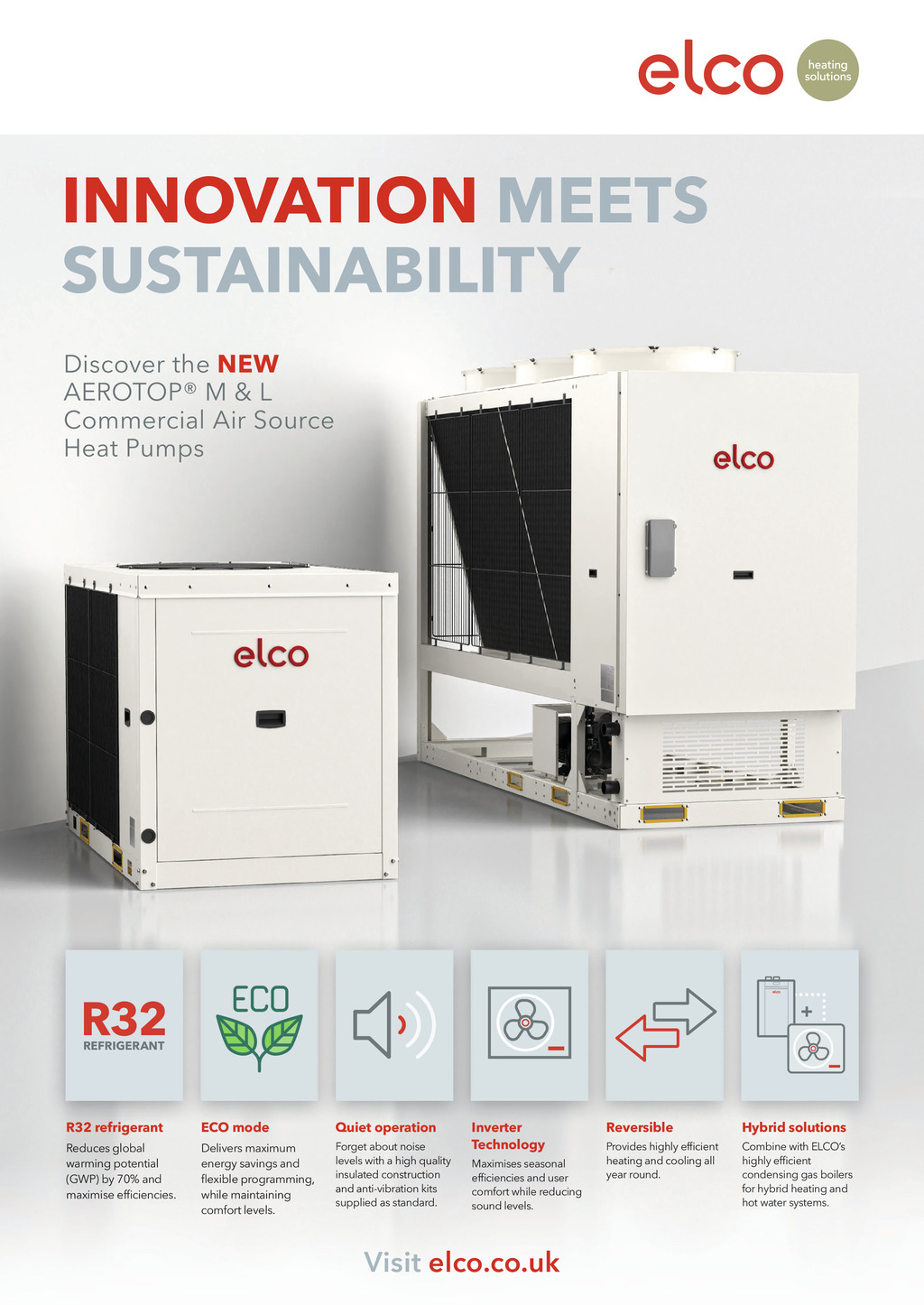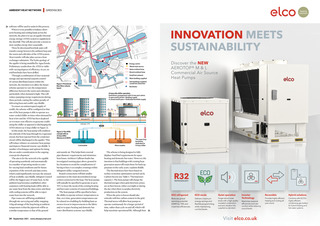




AMBIENT HEAT NETWORK | GREENSCIES software will be used to assist in this process. When it is not possible to balance shortterm heating and cooling loads across the network, the plan is to use an aquifer thermal energy storage (ATES) system to supplement the shortfall. This will also provide a means to store surplus energy inter-seasonally. Three bi-directional borehole pairs will transfer energy between the ambient loop and the warm and cold sides of the ATES system. Heat transfer will take place across a heat exchanger substation. The hydro geology of the aquifer is being modelled by Agua Enodo. Preliminary results show the ATES is viable with varying degrees of efficiency. As yet, no trial boreholes have been drilled. Through a combination of inter-seasonal storage and operational setpoint control of various distributed assets within the network, the intention is to allow the future scheme operator to vary the temperature difference between the warm and cold pipes, particularly when demand is high. This will reduce pumping energy requirements during these periods, cutting the carbon penalty of delivering heat and coolth, says Riddle. To ensure an uninterrupted supply of coolth, the scheme will be configured so that one of the heat pumps is able to operate as a water-cooled chiller at times when demand for heat is low and the ATES has been depleted or it is more cost-effective to generate coolth using the chiller as opposed to discharging the ATES (shown as A-loop chiller in Figure 2). In this mode, the heat pump will condition the cold side of the loop through its evaporator circuit, but heat rejected from the condenser circuit will be discharged to the aquifer. This will reduce reliance on customer heat pumps and improve financial returns, says Riddle. A number of techniques and options for doing this are under consideration in the ongoing concept development. The aim is for the network to be capable of operating seamlessly and automatically in a number of operating modes to cater for varying load conditions and for future expansion of the network and data centre, which could significantly increase the amount of heat available, says Riddle. Islington Council will be the biggest user of waste heat. As the ambient loop becomes established, other customers with heating loads will be able to use waste heat from the data centre and those with cooling systems will be able to reject waste heat into the network. Pipe routes are still being established through site surveying and utility mapping. A big advantage of the loop being at ambient temperature is that the pipework will be at a similar temperature to that of the ground Energy centre Waste heat source Spine ambient loop Branch ambient loop Small hot network Main building supplied Sub buildings supplied (small hot networks) Figure 1: Provisional New River scheme layout Boreholes A-loop side chiller operation Switchover arrangement with 2x two port valves A open and B closed = Building supply A closed and B open = Dedicated borehole supply 16 10 <=75 <=75 <=14 <=24 Warm pipe 15C Colde pipe <=9C Figure 2: The ATES concept with an A-loop chiller (Revesz et al 2021) Aquifer < = 8oC Aquifer > = 13oC Cold bubble Warm bubble and outside air. This helps limit external pipe diameter requirements and minimises heat losses. Architect Cullinan Studio has investigated running pipes above ground in key locations to avoid the complications of having to bury it at complex crossings within Islingtons utility-congested streets. Branch connections will link smaller customers to the main decentralised energy centres connected to the loop. The heat pumps will typically be specified to generate at up to 75oC to meet the needs of the existing heating and hot-water systems of connected buildings. The heat pumps will be specified to have the ability to operate at lower temperatures so that, over time, generation temperatures can be relaxed on a building-by-building basis as owners invest in improvements to the fabric and/or to space heating and domestic hot water distribution systems, says Riddle. Two open loop boreholes dedicated to A-loop chiller The scheme is being designed to fully displace fossil fuel requirements for space heating and domestic hot water. However, the intention is that buildings with existing heatgeneration assets will retain these for back-up purposes in the early years, explains Riddle. The thermal stores have been based on techno-economic optimsation carried out by Carbon Decent (see Table 1: Thermal store capacity). The heat pumps will charge the thermal storages when grid electricity prices are at their lowest, either overnight or during the day when there is surplus electricity production on the system. When the price is lowest should also coincide with low carbon content in the grid. Thermal stores will allow heat pumps to operate continuously for a longer period of time, rather than cycle on and off, which will help maximise operational life. Although heat 34 September 2021 www.cibsejournal.com CIBSE Sep 21 pp32-34, 36 GreenSCIES.indd 34 27/08/2021 15:17